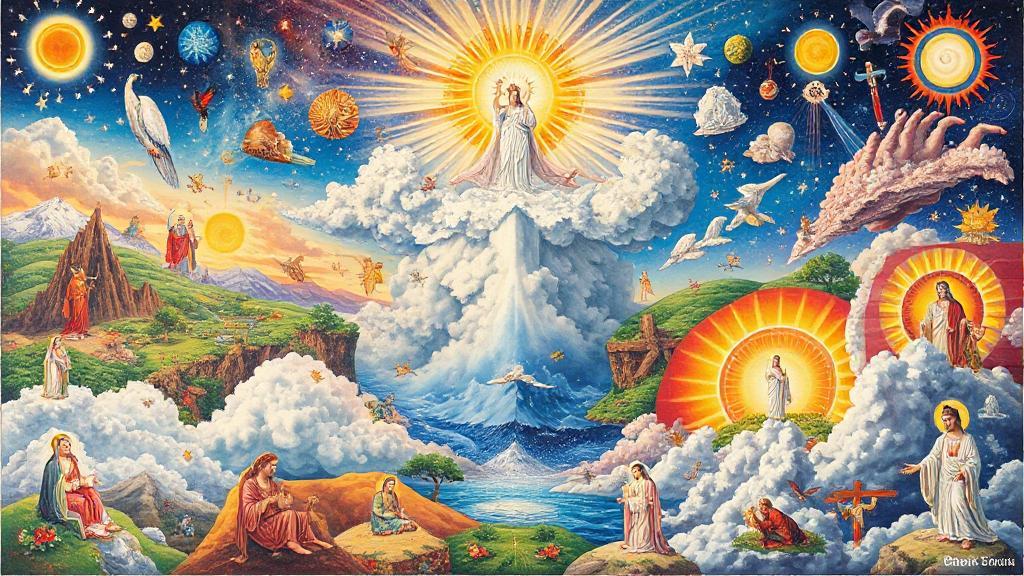Ancient Civilizations
Egyptian Paradise
The ancient Egyptians envisioned Aaru, or the Field of Reeds, as their version of heaven. This paradise was imagined as:
- A perfect reflection of earthly life
- Abundant fields of barley and wheat
- Eternal sunshine and pleasant weather
- The presence of the gods, particularly Osiris
Greek Elysium
The Greeks conceived of Elysium as a blessed afterlife for heroes and the virtuous. Their paradise featured:
- Perpetual spring
- Sweet music and dancing
- Athletic competitions
- Philosophical discussions
Abrahamic Traditions
Islamic Paradise (Jannah)
In Islam, heaven is referred to as Jannah, a paradise of physical and spiritual pleasures. The Quran describes it as a garden with flowing rivers, abundant fruits, and luxurious dwellings. Key features include:
- Rivers of milk, honey, and wine
- Luxurious gardens and fountains
- Precious metals and jewels
- Companionship with righteous souls
Christian Heaven
In Christianity, heaven is often depicted as a place of eternal peace and joy, where believers are united with God. The Bible provides several descriptions, most notably in the Book of Revelation, including:
- The presence of God and Jesus Christ
- Streets of gold and pearly gates
- Absence of pain, suffering, and death
- New Jerusalem descending from heaven
For more on Christian views of heaven, you can explore this resource.
Jewish Gan Eden
The Jewish concept of Gan Eden emphasizes:
- Spiritual rather than physical pleasures
- Study of Torah with the righteous
- Divine presence and understanding
- Perfect peace and harmony
Eastern Religions
Buddhist Pure Land
Buddhism offers a unique perspective with the concept of Pure Lands, which are realms created by Buddhas for those who seek enlightenment. The most famous is the Western Pure Land of Amitabha, featuring:
Hindu Svarga
Hindu scriptures describe multiple heavenly realms or Svarga, including:
- Indraloka - realm of the god Indra
- Vaikuntha - abode of Vishnu
- Kailasa - Shiva's paradise
Entry is based on one's actions and deeds in life, and souls eventually return to the cycle of rebirth.
Common Themes and Symbolism
Despite cultural differences, several themes appear consistently across traditions:
| Theme | Description |
|---|---|
| Light | Divine radiance or illumination |
| Peace | Absence of conflict and suffering |
| Beauty | Perfect aesthetic harmony |
| Community | Connection with others |
| Transformation | Enhanced state of being |
Additional common elements include:
- Gardens and natural landscapes
- Music and harmony
- Precious stones and metals
- Water and rivers
- Divine presence
Modern Perspectives
Near-Death Experiences
Common reports from NDEs include:
- Bright light
- Feelings of peace and love
- Meeting deceased loved ones
- Transcendent understanding
Scientific Perspectives
Some modern thinkers propose heaven-like concepts involving:
- Multiple dimensions
- Quantum consciousness
- Digital immortality
- Advanced civilizations
These varied depictions of heaven continue to evolve while maintaining connections to ancient traditions, reflecting humanity's shared hopes and dreams while preserving unique cultural perspectives.
